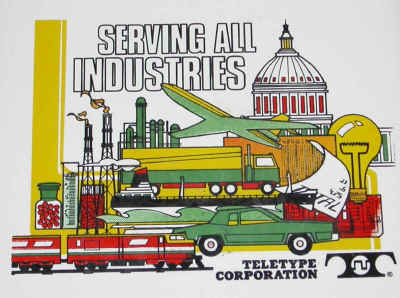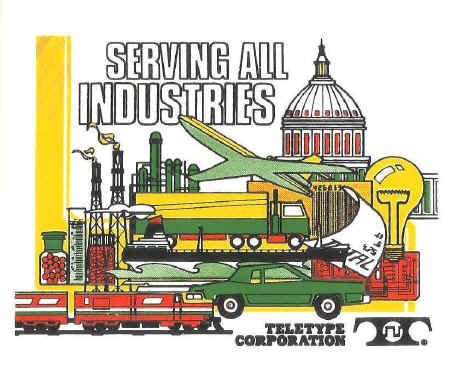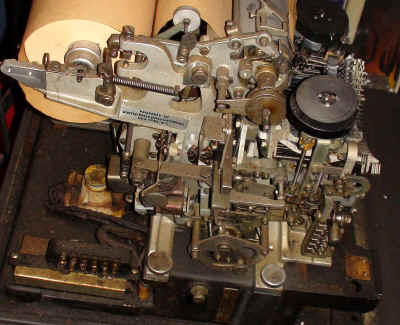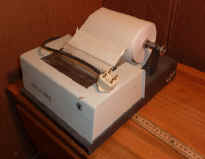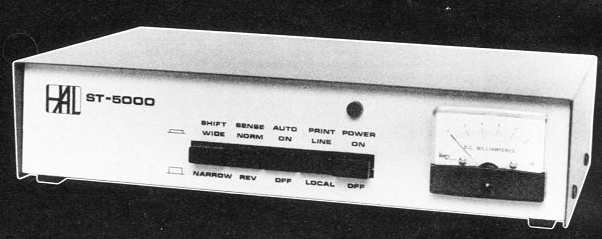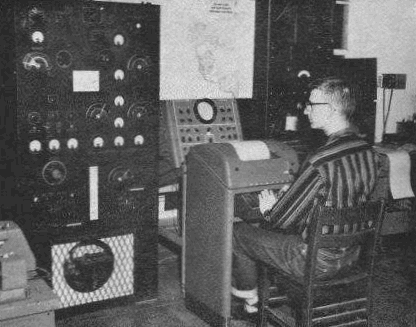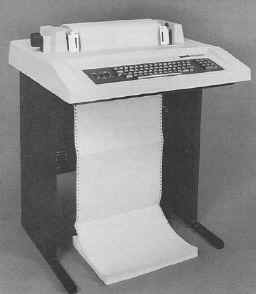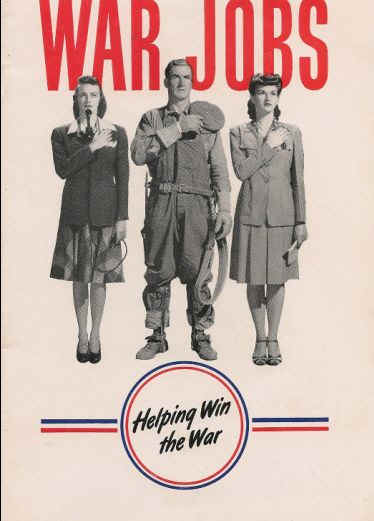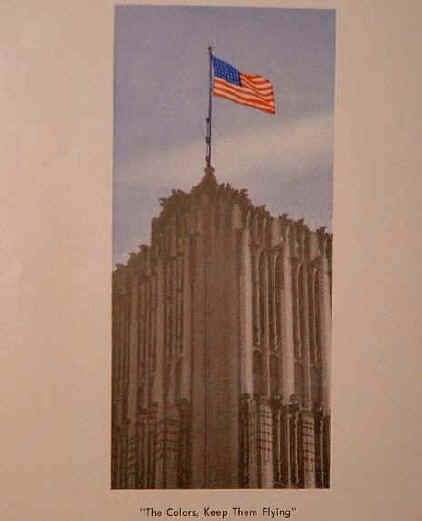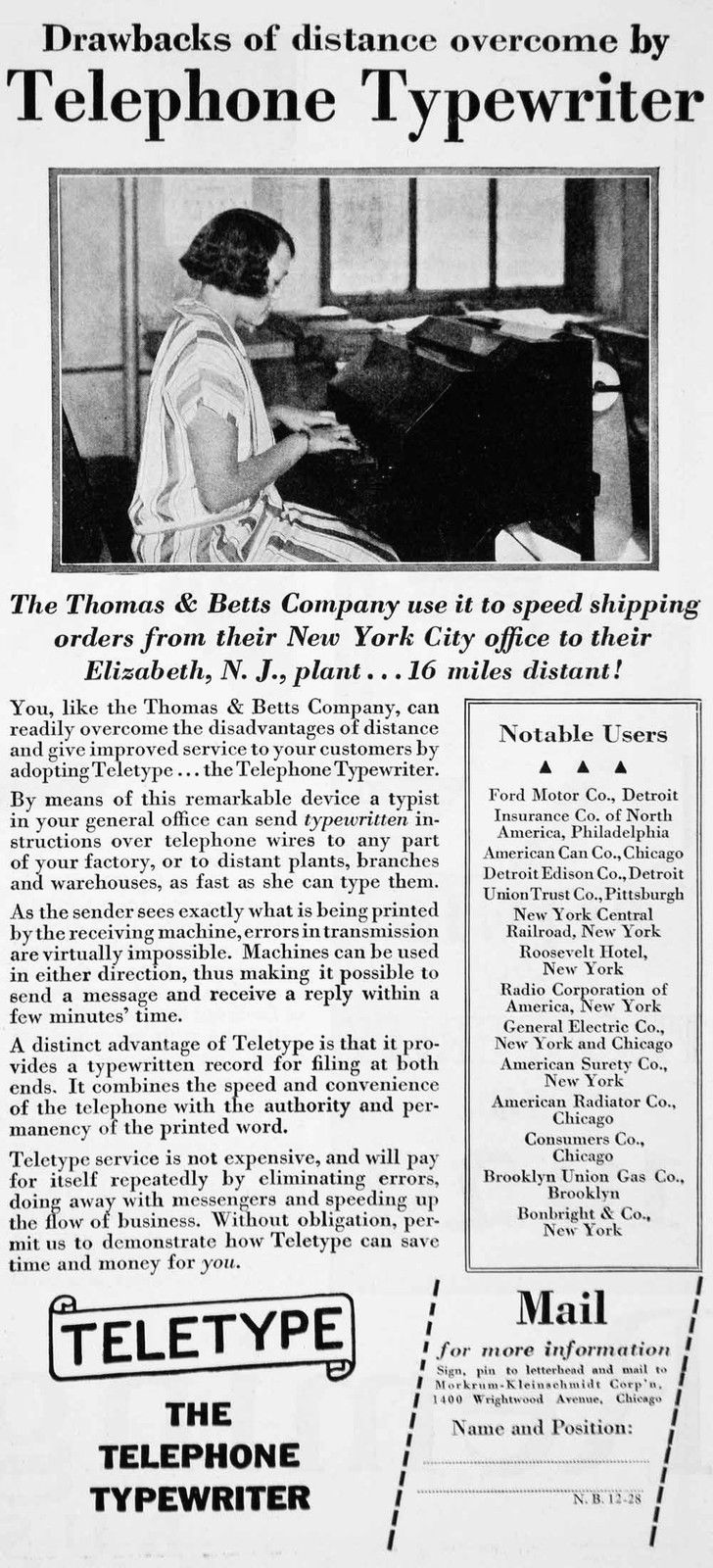|
TELECOMMUNICATIONS
FOR THE TTY / TDD History and Resources - Also Closed Captioning
|
||
|
WCLG UPI TELETYPE Morgantown WV
|
||
|
RTTY
RATT RADIO TELETYPE
HAL HISTORY ESSCO DOVETRON
|
||
|
CHAD
IS OUR MOST IMPORTANT PRODUCT |
||
|
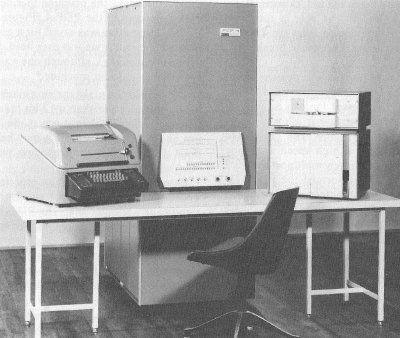
See above.... Baudot or BCD? Seems to be a table
top
|
||
|
Decwriter Printing terminals were the 'modern'
replacement for the Teletype KSR 33 in many offices that were
connected to timeshare computers. The LA36 DECwriter II was the company's first commercially successful keyboard terminal and became the de facto market standard.
.
The DECwriter progression and dates The DECwriter II -30 cps, also known as the LA36, is the second in a series of printing terminals by Digital Equipment Corporation, being introduced in 1974. There are two versions, one with a keyboard and several switches, called the LA36, and one with just the printing assembly and less switches, designated LA35. It was preceded by the DECwriter 30 cps in 1970. It is succeeded by the DECwriter III in 1978. The DECwriter IV, also known as the LA38, is the last in a series of printing terminals by Digital Equipment Corporation, being introduced in 1982. There are two versions, one with a keyboard and several switches, called the LA38, and one with just the printing assembly and less switches, designated LA34. The DECwriter IV models ended the floorstanding design of the previous DECwriters and are tabletop models, about the size of a large typewriter. The DECwriter IV was the last of DEC's printing terminals.
|
||
|
Bell System Wartime Booklet PDF FILE Thanks to JimC IN SF CA ! |
||
|
|
||
|
TELETYPE Accessory items - Company issued and
contrived by others! HERE
|
||
Explore the World of Military Teletypes
HERE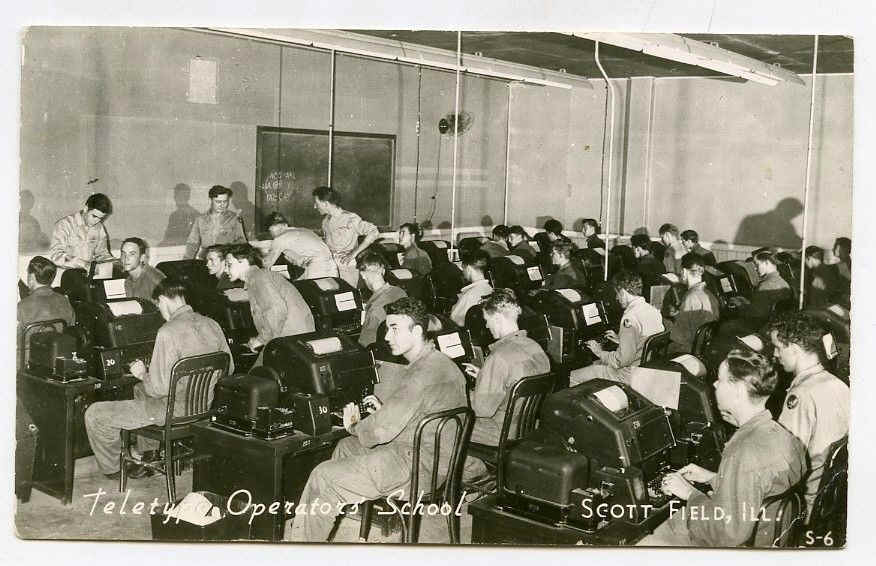
|
||
|
RTTY
PICTURE TAPE CATALOG OF AL PERKINS. GALESBURG ILL. - Contributed by David K0LUM - This is a 3 meg PDF file |
||
|
WANTED TELETYPE PART #162669
This is a
Teletype Corporation gear associated with
the three speed gear shift for the Model 28. Find one of these gears or want to make one Email info@smecc.org Elusive Pinion gear Here are the specs 24 D.P.
14 1/2 P.A.
15 teeth
11/32 pitch circle.
Face width 1/2"
Hub length 5/8"
Hub diameter 1/2"
Hub bore 3/8"
Thanks to Russ - WA3FRP for the specs.
|
||
|
A Chemical Teletype
Feldman, Alfred
Journal
of Chemical Documentation, 13, 2, 53-56, May 73
A Teletype Model 37 machine has been modified for the coding of
chemical structures. The coding rate of this model is higher than
that of other machines of this type. The rationale for choosing this
particular type of input equipment is presented.
++++++++++++++++++++++++++++++++++++++++++++++++++++
(ran across this citation while looking for
something else - an odd addition for anyone
colleting 37 stuff and info - we do not
have the source publication . - Ed Sharpe archivist for SMECC)
|
||
| Virgil Bradshaw, 77; developed
Associated Press LaserPhoto
As deputy director of the wire service's communications department in the
1970s, he introduced a breakthrough technology that, by processing photos
with heat, produced higher-quality images that could rapidly reach news
publications.
"Before that, the photos were transmitted slowly on a photo fax
machine and they were grainy in quality," said Patrick Bradshaw, Mr.
Bradshaw's son and chief of communications for AP in Indianapolis.
When Mr. Bradshaw retired from AP in 1985, he moved from New Jersey to
Ramona, where he became managing editor of the monthly San Vicente
Valley News.
He died Sept. 10 of complications from a stroke and congestive
heart failure at his Ramona home, his son said. He was 77.
In the competitive world of wire services, Mr. Bradshaw always looked
for an edge. "He was a driving force at AP in keeping it ahead of the
game," Patrick Bradshaw said.
In developing the LaserPhoto technology, Mr. Bradshaw consulted
professors and students at the Massachusetts Institute of Technology to
refine the concept and create a prototype. He then enlisted a Florida firm
to begin production.
The system entailed processing with heat instead of chemistry and the
application of a laser light source instead of conventional lamps.
AP updated the system in 1989 with computer technology that allowed
photos to be viewed on a computer screen.
Mr. Bradshaw, the son of an AP Teletype operator, was born in Hannibal,
Mo.
He left his job as an AP copy boy in Kansas City, Mo., to join the Navy
during World War II. He served overseas as a yeoman third class, with a
specialty in journalism, aboard the destroyer escort Emery.
After the war, Mr. Bradshaw attended Rockford College and resumed his
job with AP in Kansas City, working his way up to Teletype operator.
He became chief of communications in AP's St. Louis office and
continued in that capacity in Indianapolis and Chicago. When he became
deputy director of communications, he oversaw chiefs in each AP bureau and
negotiated union contracts.
Seeking a milder climate, Mr. Bradshaw and his first wife, Mary, moved
from Matawan, N.J., to San Diego Country Estates after his retirement.
The idea of writing and editing appealed to him after a career on the
technical side of the news industry. So he began contributing photographs
to the San Vicente Valley News.
Before long, he was supervising a small staff, covering community
news and writing editorials. As the health of his wife began to
deteriorate before she died of cancer in 1995, he cut back on his
workload.
"The newspaper was a passion for him, and he enjoyed it
immensely," Patrick Bradshaw said. "He was always a bit of a
workaholic – always had to be doing something or going somewhere."
Despite the demands of his AP job, he always found time for his eight
children. "He never missed any of our games," son Mike Bradshaw
said. "Everybody played different sports in high school, and somehow
he was there for us."
A sports enthusiast, Mr. Bradshaw had played football in high school
and had umpired in a semiprofessional baseball league. He was an avid
hunter and tennis and table tennis player.
Survivors include his second wife, Perdita; daughters, Debbie
Gasikowski of New Jersey, Mary Murphy of Denver and Annette Bradshaw of
Escondido; sons, Mike Bradshaw of San Diego, Steve Bradshaw of New Jersey,
Patrick Bradshaw of Indianapolis, Tim Bradshaw of New Jersey and John
Bradshaw of Washington, D.C.; and 20 grandchildren.
Services were Wednesday at Immaculate Heart of Mary Catholic Church,
Ramona. Interment was at Nuevo Memory Gardens, Ramona. Donations are
suggested to the Elizabeth Hospice, 150 W. Crest St., Escondido, CA 92025
or Immaculate Heart of Mary Catholic Church, 537 E St., Ramona, CA 92065.
|
||
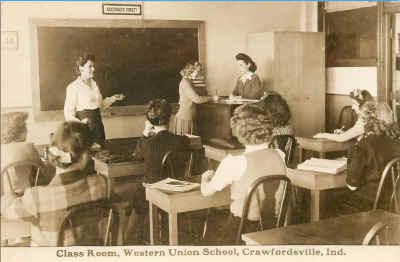
(marked on back 8-46) |
||
| Kleinschmidt
Commercial Teleprinters
PDF file for You!
|
||
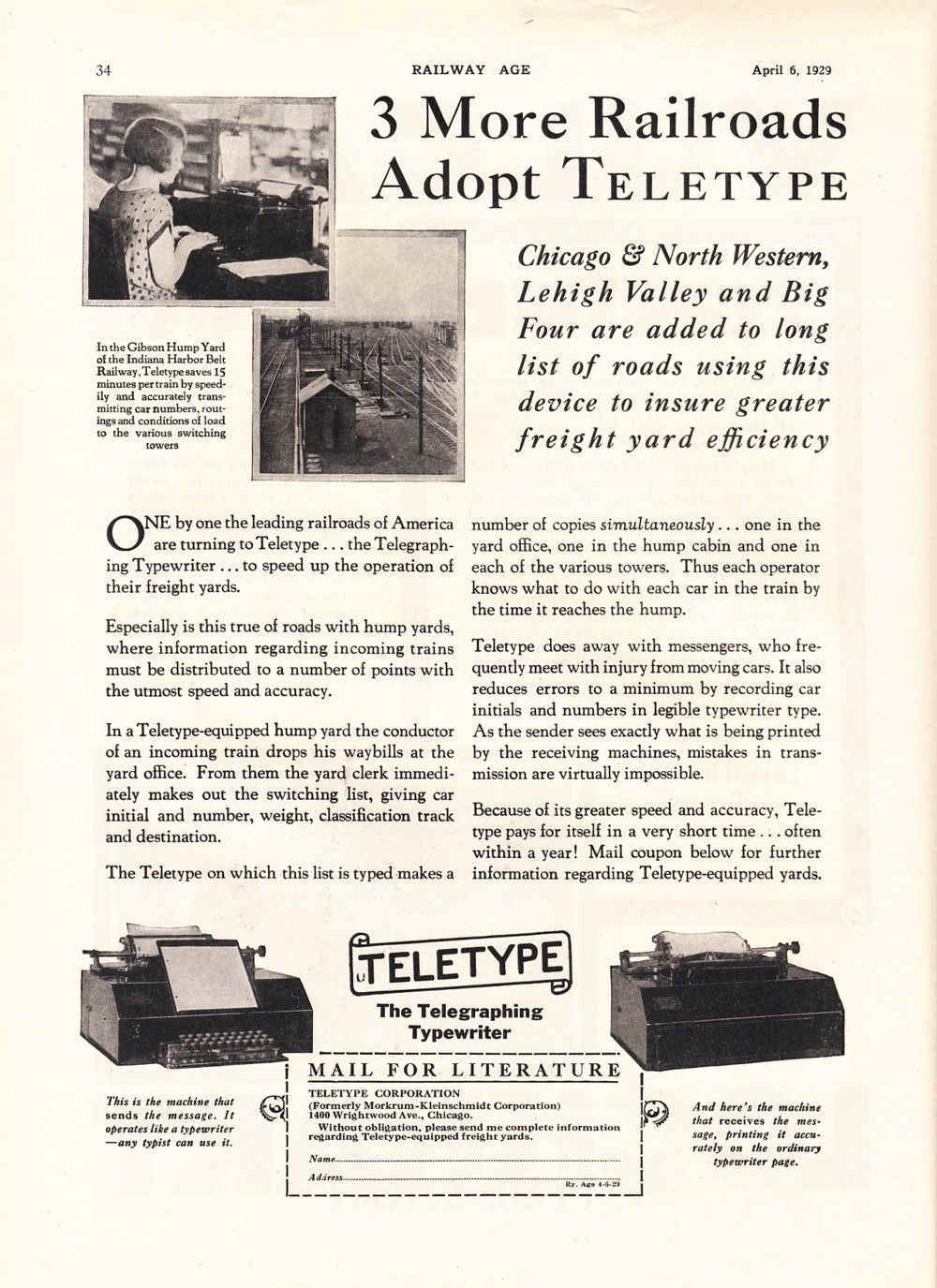
|
||
| Doug offers the following insight into Teletype
Model Codes:
|
||
|
There
are 2 UPI teletypes next to each other in the news room.. why?
There are 2 UPI teletypes next to each other in the news room.. why? redundancy? one a 15 one a 20?(although this is tv news not print). I know also that news wires had version for on air and version for print ? but?
Just curious and in hopes some here that were in close contact with wire services can help educate me.
as seen in - real footage not recreation footage - used in- Secrets
of the Dead - see if reruns Ed,
I think I can give an educated guess,
but only from the AP side.
Bottom line, I'd suspect the TV
station simply wanted more news than the radio wire could supply, either
in volume or depth. 73 Sheldon
|
||
